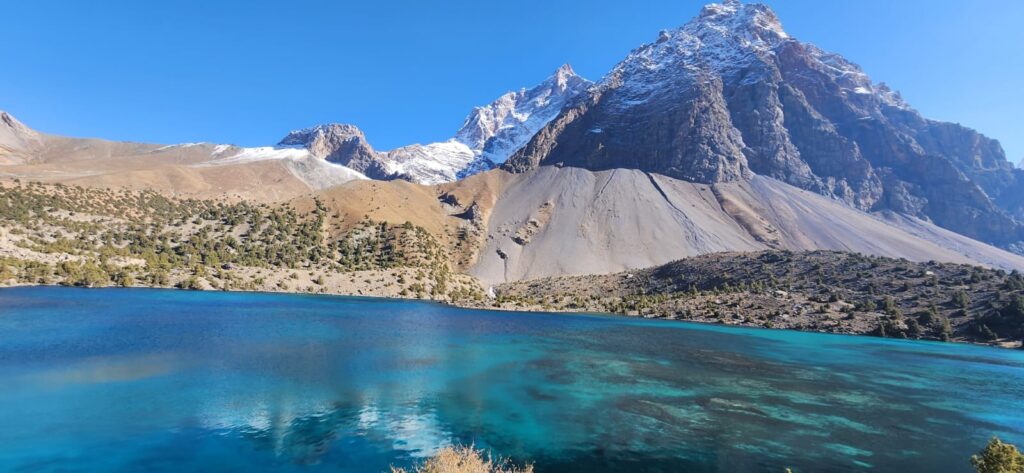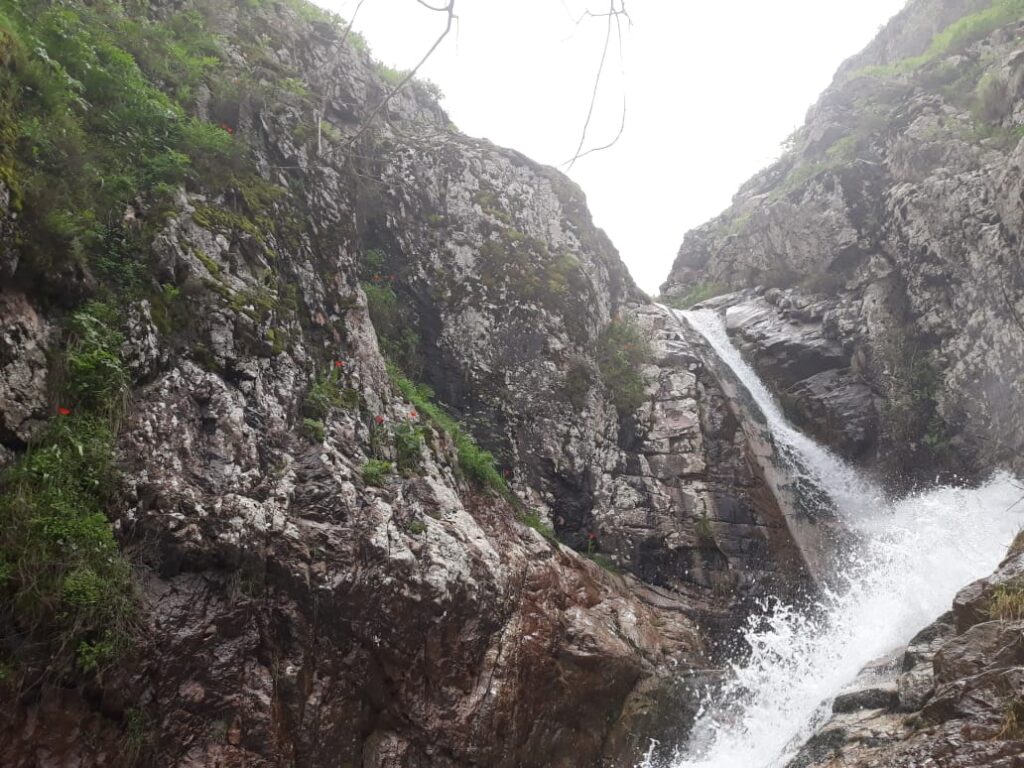Where the Vakhsh River meets the Amu Darya, a floodplain stretches into thickets, wetlands, and forests of willow and poplar. This is Tigrovaya Balka, Tajikistan’s oldest nature reserve and one of Central Asia’s most important floodplain ecosystems. To walk here is to enter a geography defined by water’s ebb and flow, by forests that rise and retreat with floods, and by memory of species that once roamed the thickets.
The name “Tigrovaya Balka”, meaning Tiger Ravine, carries a story. The Caspian tiger (Panthera tigris virgata) once prowled these forests, stalking wild boar and Bukhara deer. The last tiger was reported in the 1950s. Its absence lingers as ghostly presence, woven into the reserve’s name. Even without tigers, the floodplain remains alive: reeds swaying in wetlands, herons lifting from channels, boar rooting in soft soil.
Floodplains are dynamic landscapes. In Tigrovaya Balka, water shapes everything. Seasonal floods from the Vakhsh recharge groundwater, sustain willow and poplar groves, and replenish reed beds. When floods recede, moist depressions remain, attracting insects, amphibians, and birds. Forest patches shift gradually, advancing into new sediment deposits while retreating from drier ground. The reserve is a palimpsest, written and rewritten by water.
Tigrovaya Balka is not a static forest but a moving geography. Its boundaries blur with floods, its soils breathe with rising and falling water. To see it clearly is to abandon fixed maps and instead read rhythms: flood, growth, retreat, return.
Walking along a side channel, you encounter dense tugai forest: poplars with rough bark, willows leaning over water, tamarisks filling undergrowth. The air is humid, heavy with scent of leaf and soil. Birds scatter: night herons, warblers, starlings. In open patches, pheasants rise noisily, wings beating against silence. The tugai here is thicker than elsewhere in Tajikistan, a reminder of what once lined the Amu Darya from source to delta.
Ecologists classify Tigrovaya Balka as a unique floodplain-tugai complex, harboring rare species like the Bukhara deer (Cervus elaphus bactrianus) and reed cat (Felis chaus). Deer slip quietly through thickets, their hooves sinking in soft soil. Reed cats hunt among reeds, elusive, half-seen. Wild boar leave rooting traces everywhere. The reserve is also critical for migratory birds along the Central Asian flyway such as pelicans, cranes, ducks. In spring, skies fill with movement, riversides echo with calls.
Yet even as life thrives, fragility shows. Without periodic floods, the forest weakens. Hydrologists note how dams and diversions upstream alter flood pulses, reducing groundwater recharge (Breckle, 2007). Some groves dry out, replaced by desert shrubs. Reed beds contract. Salinization spreads on higher ground. The floodplain’s health is inseparable from water’s generosity.
A ranger who has worked in Tigrovaya Balka for three decades says, “I know the forest by sound. When frogs are many, water is good. When they are silent, I worry.” His observation captures hydrology as chorus: amphibians, insects, birds reflect water levels. The ranger’s ears become instruments for geography.
Walking further, you reach wetlands where open water glints between reeds. These ponds host turtles, fish, dragonflies. In summer, lilies bloom. Children from nearby villages sometimes fish at the edges, pulling carp and pike. Fishermen recall when catches were larger, before some channels silted up. Yet the wetland still pulses with life, alive with buzzing, croaking, splashing.
The soils here tell another story. Flood sediments layer rich alluvium, dark and moist. Roots bind it loosely, but once water recedes too long, cracks form, salts rise, fertility drops. Soil pits reveal alternating bands: silt, clay, organic matter. Each band is a memory of a flood, a mark of the river’s history. To dig is to read hydrological archives.
Botanists value Tigrovaya Balka for its plant diversity. Besides willows and poplars, the floodplain supports tamarisk, oleaster, reed beds, and grasses adapted to shifting water. Some plants provide fodder, others stabilize banks, others shelter nests. The combination makes tugai a mosaic: patches of dense thicket, open glades, reed marshes, meandering channels. Diversity arises from change, from water’s unpredictability.
Faunal memory stretches further back. The reserve once sheltered not only tigers but also Asiatic lions in earlier centuries. Their disappearance parallels forest contraction. The persistence of deer and boar offers hope but also dependence: without thickets, their populations shrink. Raptors that hunt them lose prey. The food web thins. Geography here is interdependence- trees, floods, animals, soil, all entwined.
Scientists warn that tugai systems are among the most endangered ecosystems in Central Asia (Karnieli et al., 2008). Their reliance on floods makes them vulnerable to river regulation. Tigrovaya Balka, though protected, feels these pressures. Some channels now carry less water, some forests dry, some reed beds decline. The reserve survives but is stressed.
Yet in its persistence lies resilience. Each spring, when floods still arrive, new shoots sprout, fish spawn, frogs chorus. Storks return to nests, herons hunt. Children walking the banks still marvel at flocks rising. The floodplain, though diminished, continues its cycles.
At dusk, Tigrovaya Balka transforms. Light fades, air cools, animals emerge. Boar rustle, owls call, insects hum. The river glows faintly. You sense that the floodplain is alive in ways statistics cannot capture. It is breathing geography, a landscape where water, soil, and life compose a fragile symphony.
References
- Breckle, S. W. (2007). Flora and vegetation of Middle Asia: Ecological aspects and conservation needs. Plant Diversity and Evolution, 124(3), 301–320.
- Karnieli, A., Qin, Z., Wu, B., Panov, N., & Yan, F. (2008). Spatio-temporal dynamics of the Amudarya River Delta tugai forests. Remote Sensing of Environment, 112(5), 2131–2149.
- Heptner, V. G., & Sludskii, A. A. (1992). Mammals of the Soviet Union, Vol. II: Carnivora. Smithsonian Institution Libraries.
- Nowell, K., & Jackson, P. (1996). Wild Cats: Status Survey and Conservation Action Plan. IUCN.








